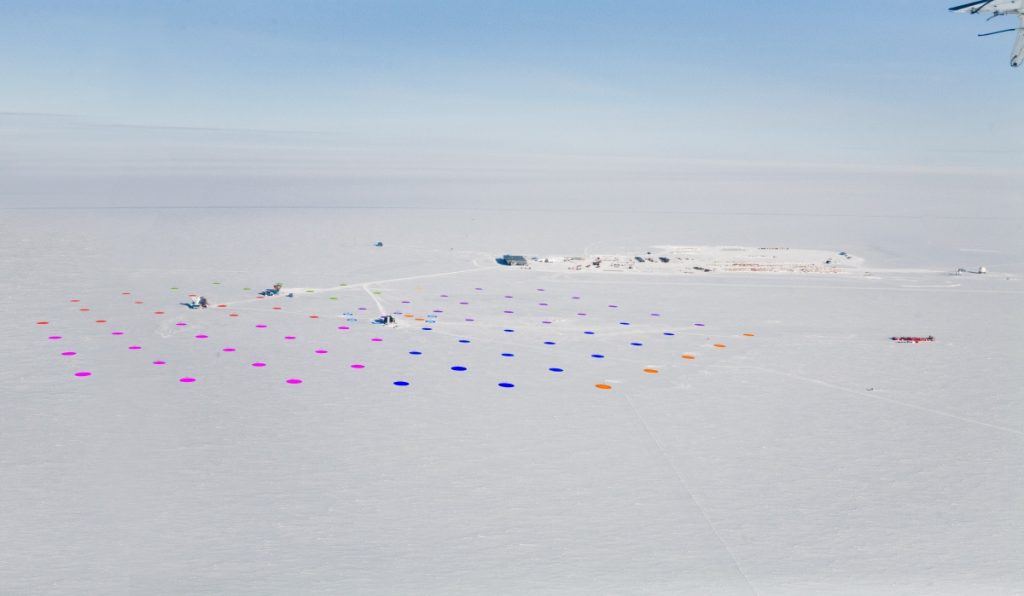IceTop is the surface component of the IceCube Neutrino Observatory. It was first envisioned as a means to support neutrino searches with IceCube, but IceTop is also designed as a powerful detector for observing cosmic rays.
IceTop is an array of 81 stations spanning a square kilometer of the Antarctic ice sheet. Each station is located on top of one of IceCube’s strings and holds two tanks of frozen water, each tank equipped with two IceCube sensors or DOMs.

Cosmic rays are high-energy charged particles that strike the Earth all the time, from all directions. They originate in outer space and travel at nearly the speed of light. Most of them are atomic nuclei, mainly protons, but they also include electrons, positrons, and other subatomic particles.
When these particles enter the atmosphere, they interact, producing an air shower of secondary particles that reach the Earths’s surface. IceTop was designed to detect secondary charged particles in cosmic ray showers. The detection of several particles from the same shower in IceTop allows estimation of the energy and direction of the incoming cosmic ray.
IceTop can detect cosmic rays in the energy range from about 100 TeV to 1 EeV. Either as a standalone detector or together with IceCube, this surface array can tell us about the high-energy spectrum of cosmic rays, their composition (i.e., the proportion of protons or heavier nuclei in the cosmic-ray flux), and the distribution of the cosmic-ray arrival directions.
What can we learn from cosmic rays?
Did you know that the highest energy particles ever observed are cosmic rays? They reach energies above 1020 eV, which is equivalent to the kinetic energy of a baseball traveling at approximately 100 mph! Actually, if the baseball could be accelerated just like that cosmic ray, it would hold enough energy to support Earth’s population for 1 million years!

By learning more about cosmic rays, we are exploring the most extreme environments in our universe. However, cosmic rays are electrically charged and they are deflected by magnetic fields in our galaxy and beyond. These fields randomize the cosmic-ray arrival directions and therefore cannot tell us about their origin.
Galactic cosmic rays originate in sources throughout the Milky Way. Being charged particles, they produce electromagnetic radiation that can be traced along their paths through our galaxy. For example, supernova remnants such as the Crab Nebula are known to be a source of cosmic rays from the radiation emitted by cosmic-ray electrons spiraling in the magnetic fields of the remnant.
Scientists have speculated that several other cosmic objects, in or beyond our galaxy, could produce very high energy cosmic rays. Most them are yet to be proven. In fact, very little is known about the origins or the properties of very high energy cosmic rays, especially those of extragalactic origin, which happen to be very rare (see figure above).
Huge detectors, such as IceTop and IceCube, can measure significant samples of these events every year to study the properties of very high energy cosmic rays. IceCube is also searching for their sources by using neutrinos (learn more about this here.)
This article has been prepared by a professional science writer. Read more articles written by Rob D Young here or at rdywriting.com.


